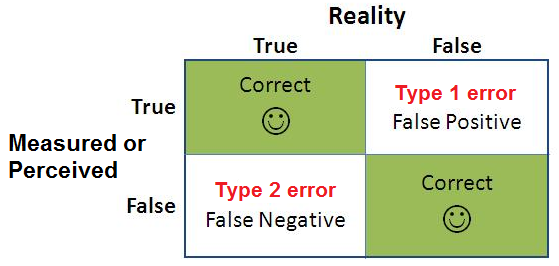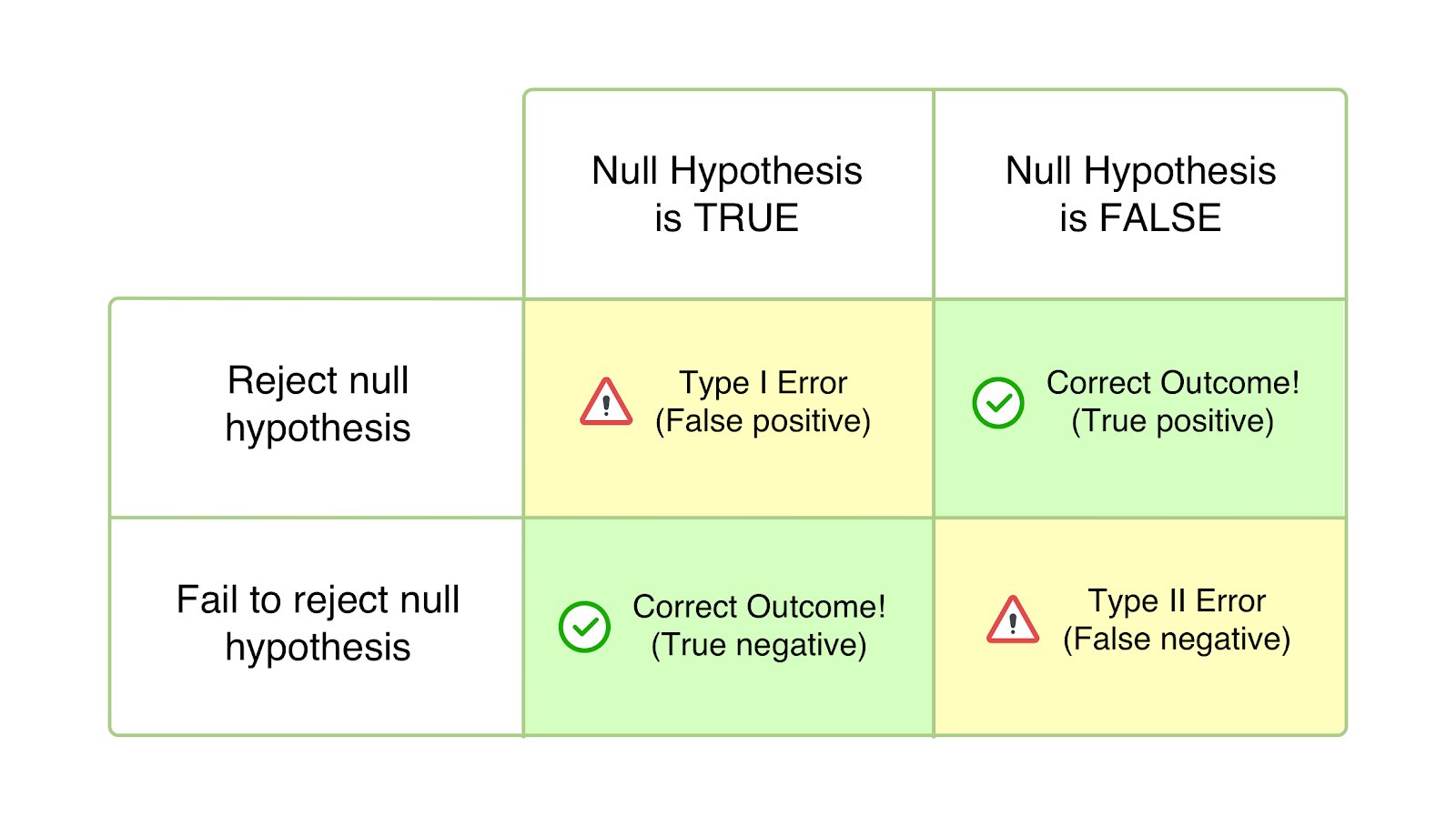Table of Contents
These fixing tips are worth reading if you’re getting a type 2 false negative error message on your computer.
PC running slow?
Also known as total false negatives, large variance II error occurs when a scientific theory cannot accurately reject a null hypothesis that is indeed false. The probability of making a Type II error is called beta (β) and is related to the power of statistical control (power = 1-β).
The new CPR and EVE guidelines place a strong emphasis on evidence as the basis for all new clinical guidelines. The evidence base can range from a high level of 1 (one or more randomized controlled trials) to a low level of 8 (rational guess, common sense, or historically accepted as standard practice). Non-evidence-based considerations may influence the selection of a general class of recommendations, such as high intervention effort, ease of learning, combined with the consequences of error. A technique that can improve outcomes based on multiple evidence, such as open-chest CPR, is complex, difficult to learn, and difficult to implement. Such a method is nowhere near as strong as the Best Method, which provided more modest improvements in mere survival, but did so with greater convenience in training, learning, and practice.
Two principles that were less ofknown to the experts of the 2000 International Recommendations, have materialized in countless debates around the school’s final recommendation:
-
What causes Type 2 error?
Avoid “false negative” (type II) errors in patient evaluation.
-
Which is worse Type I error false positives or Type II error false negatives )?
Minimize the risks of procedures, while possible.
We followed these principles and came up with three new guidelines:
-
Release of heart rate monitoring for non-professional rescuers.
-
Secondary approval of endotracheal tube placement methods. Are these sorts of additions to the current over-emphasis on physical examination as the best method of confirmation? p>
-
What is a consequence of a Type 2 error?
Physician’s assessment: “No disease” if the disease is actually present (false negative or Type II error only).
< /li>
-
Is a false negative a Type I error?
Type I (false positive) corruption occurs when a researcher rejects a null hypothesis that is in fact true, such as the population; Type II error (false negative) occurs whenwhere the researcher cannot reject the great zero hypothesis, which is in fact false under population conditions.
Physician’s diagnosis is definitely ” present disease” when in fact it is literally a non-existent disease (false positive or Type I error).

p>
st>
As a general rule, clinicians tend to avoid what are known as type II errors, or false negative consent errors.
Epidemiologists and statisticians, I would say, used the classic 2×2 diagram to express this romantic relationship between “truth” – the presence or absence of a disease – and the clinician’s clinical diagnosis – the presence of a disease or the disappearance of a disease (see Table 1<). a#T1"> ).
The classic 2×2 matrix also has many applications in clinical epidemiology and therefore in diagnostics. Clinicians, researchers, and epidemiologists use a 2×2 matrix to calculate overall sensitivity, specificity, and accuracy.diagnostic scores; and the odds ratio of positive or negative effects of treatment. In statistics, a 2×2 matrix is included in the calculations, to test the “null” hypothesis, try to explore the magnitude, power and probability value that accompany the probability of errors β and β.
However, no clinician reports false negatives and false positives (type I and extended range II) that are equally attractive or worrisome. If the clinician unfortunately makes clinically false predictions, a particularly serious error would be: (a) telling the patient that he is right when in fact the patient is suffering fromserious illness (false negative or Type II error) or (b) tell the patient that they are in a particularly bad condition when in fact the persister is completely healthy (false positive or error of variance 1)?
A false-negative failure (type II) misses the opportunity to try to “cure”. Most clinicians would say that this is a much more serious error than a false positive (type I), i.e., a mistake, the thought process that the disease is present, although, as a rule, this is not the case. Mistakes that are false positives have negative consequences, causing anxiety, anxiety, and unnecessary medical attention. If the treatment itself does not seriously affect the factors and does not harm the patient, the removal of a negative diagnosis and the synthesis of it with a clear description of the current state will have little or no serious consequences.
Pulse test: diagnostic test
PC running slow?
ASR Pro is the ultimate solution for your PC repair needs! Not only does it swiftly and safely diagnose and repair various Windows issues, but it also increases system performance, optimizes memory, improves security and fine tunes your PC for maximum reliability. So why wait? Get started today!

Computed tomography of the pulse, studied by several people in the 1990s, is actually a giant diagnostic test.
Palpation of the carotid arteries “tests” for the “diagnosis” of criminal cardiac arrest. When this “sickness” is present and all rescuers correctly diagnose “no pulse”, the actual rescuer initiates CPR and (intermittently) applies CPR and delivers shocks.
What is a Type 2 error in hypothesis testing?
If a pulseless condition should be present and the rescuer incorrectly says that they feel the heart (false negative), then the rescuer will not perform CPR and will not check for ventricular fibrillation with an AED. These types of false negative results lead to significant negative consequences, so to speak, to the loss of a chance to save a new life.
One of the most important studies on heart rate control was first presented in 1994 at the European Resuscitation Council Scientific Congress
Is a false positive a Type 2 error?
In statistics, total Type I error is a false positive, and Type II error is now a false negative. Making a record decision is always associated with uncertainty, so the pitfalls of these mistakes are inevitable when using hypothesis testing.
What causes a Type 2 error?
Type II errors are mainly caused by the fact that the statistical power of the best test is low. Type II error occurs when a statistical test is definitely not powerful enough. The largest sample size can also lead to a Type I error because it affects the test result itself.
Como Corrigir Erros Falsos Negativos Do Tipo 2
Cómo Corregir Errores Falsos Negativos De Tipo 8
Hur Man åtgärdar Typ 2 Falska Negativa Fel
Wie Man Falsch Negative Fehler Vom Typ 2 Behebt
유형 2 거짓 부정 오류를 수정하는 방법
Как исправить ложноотрицательные ошибки второго типа
Hoe Type 2 Valse Negatieve Fouten Op Te Lossen
Comment Corriger Les Erreurs De Faux Négatifs De Type 2
Come Correggere I Falsi Errori Negativi Di Tipo 2
Jak To Naprawiłoby Fałszywe Błędy Ujemne Typu 2